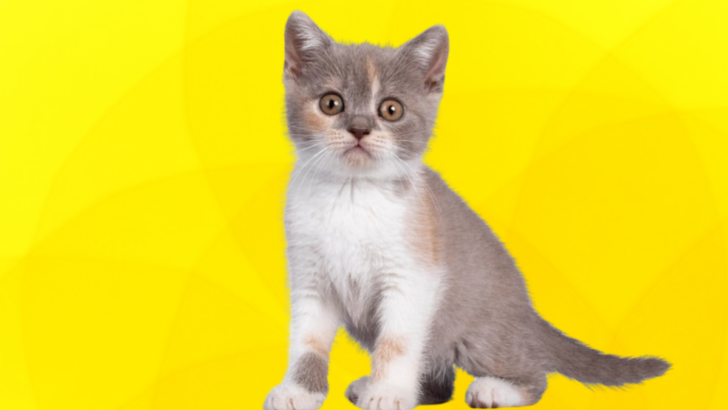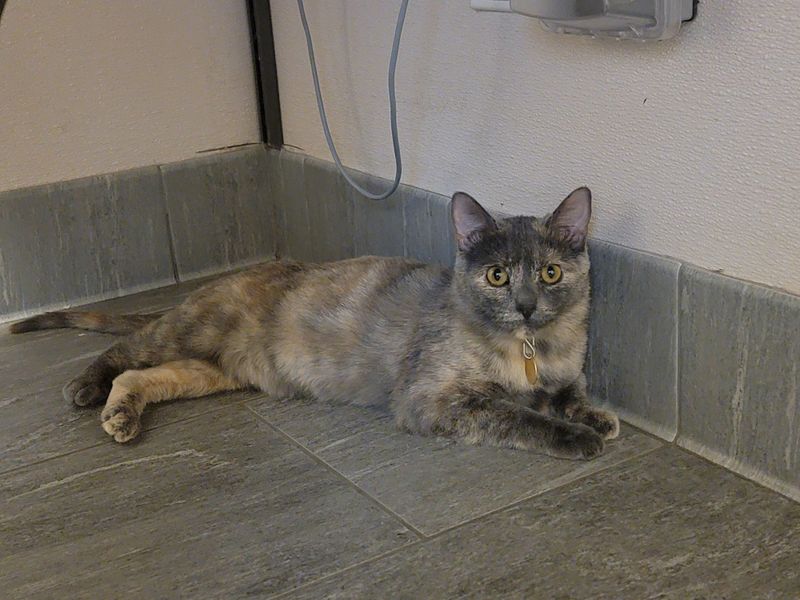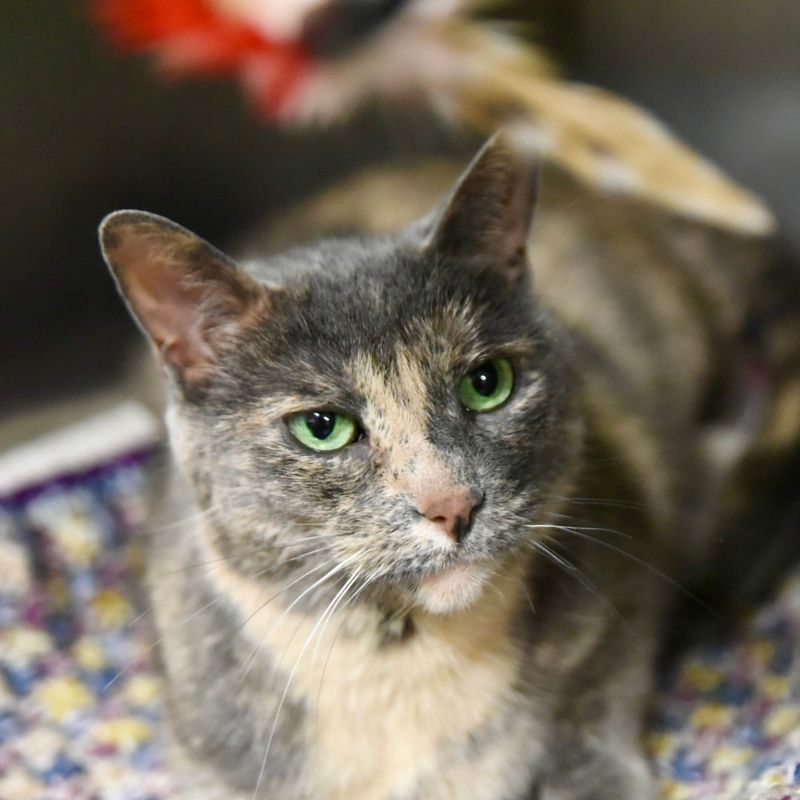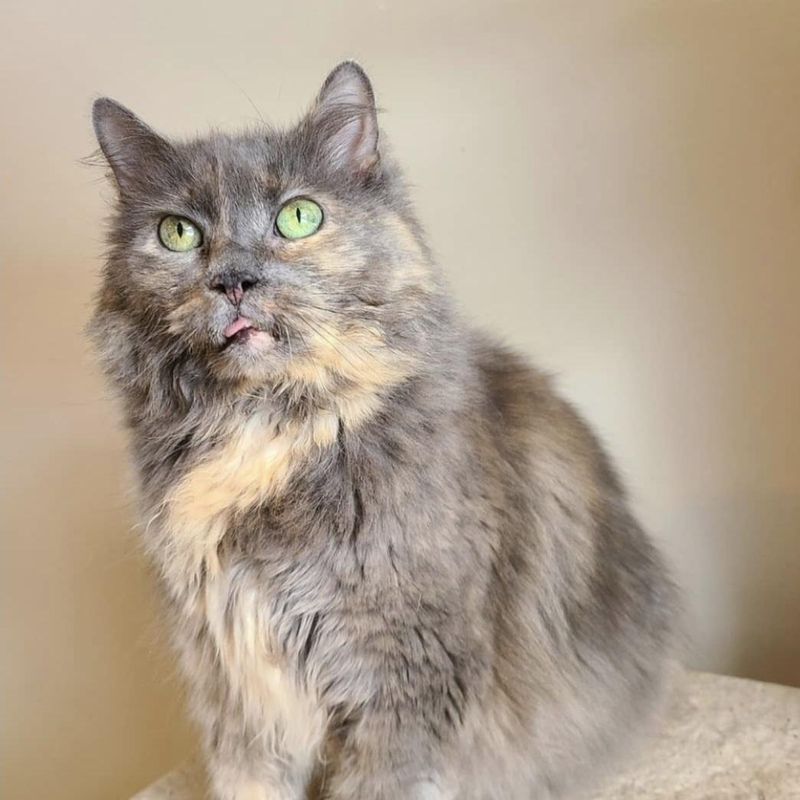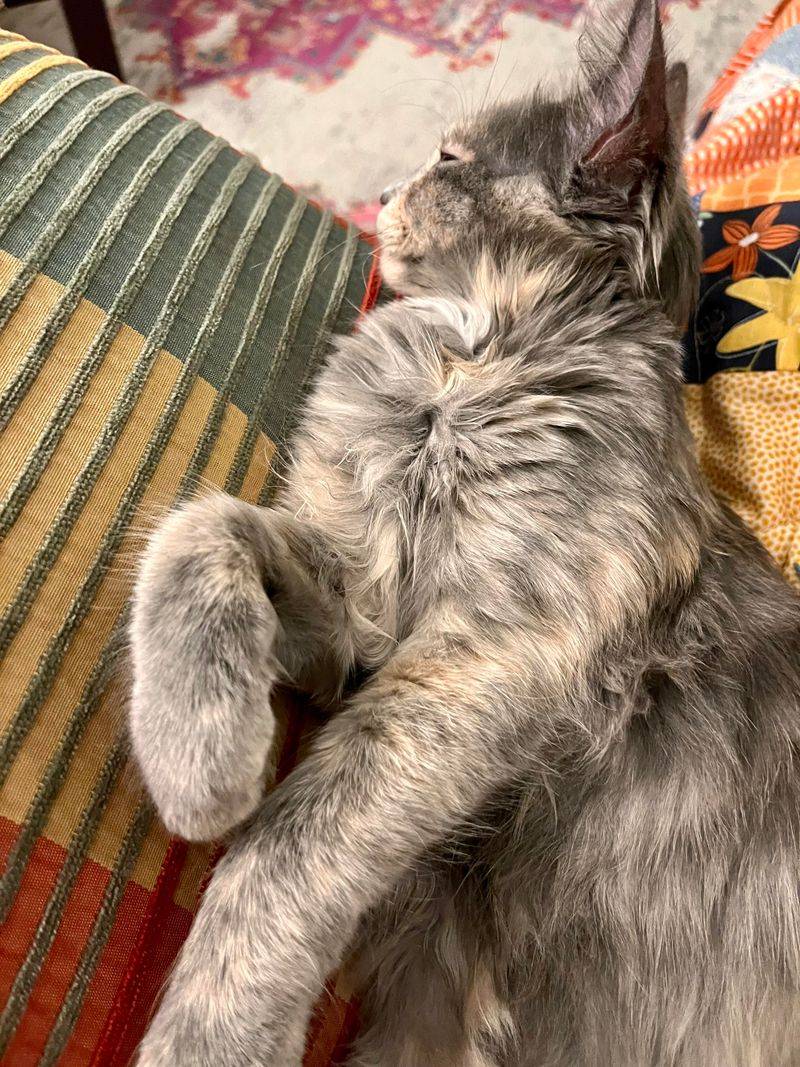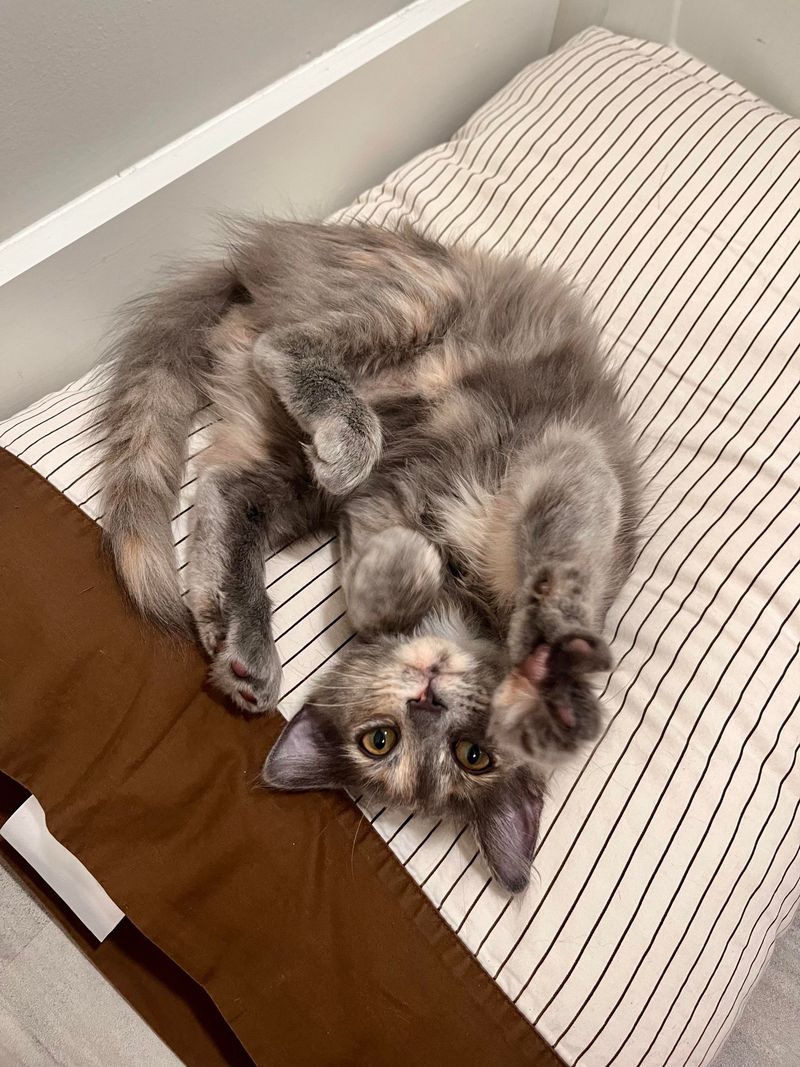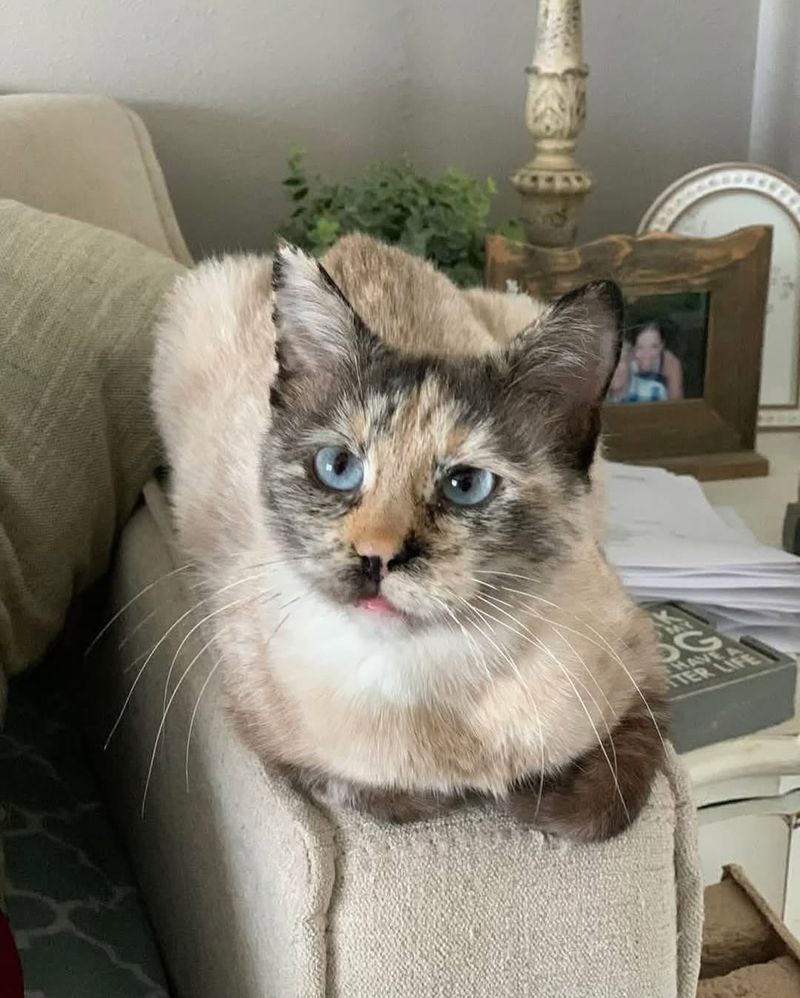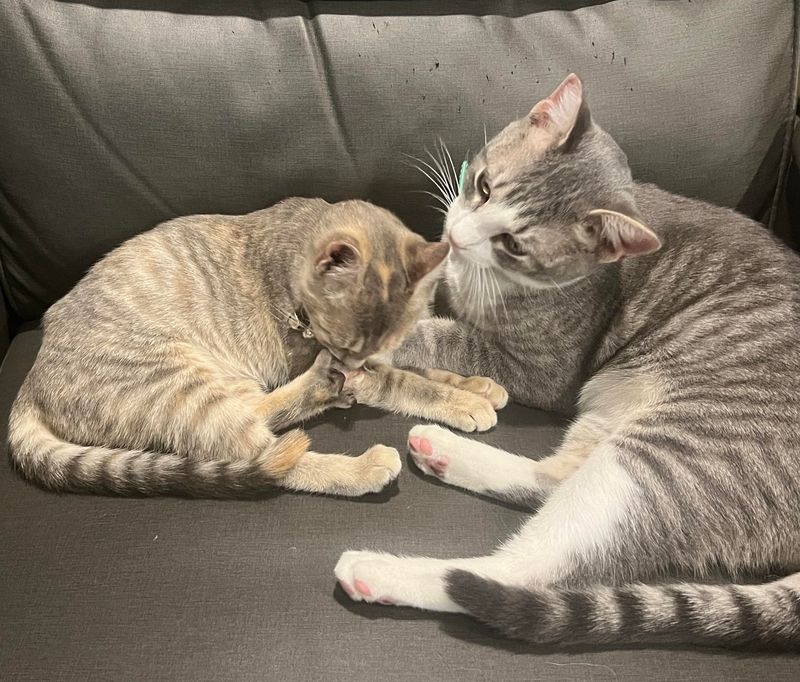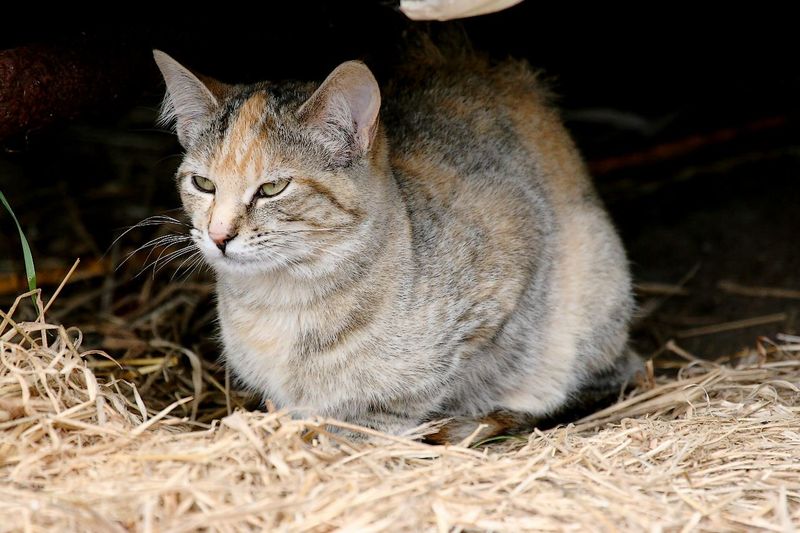Maybe you’ve been spending your time researching mythological creatures. Maybe you uttered “What makes cats mysterious and meowgical,” while your FBI agent was recording everything you say (those iPhones). Whatever the case might be, you stumbled upon a lilac tortoiseshell cat.
And, you haven’t been the same since. “What are these mythical creatures?” you thought to yourself, wondering whether you found yourself on the wrong side of the internet once more.
But, lilac torties aren’t a thing of dreams. They’re as real as they can be with the fluffiest of furs and the deepest of eyes. And, they’re as rare as you might have guessed yourself.
Dear God, how come you didn’t know there was a cat somewhere out there with fur that resembles every color of the Provence lavender fields? And, how come you were completely out of touch with the fact that there was a cat somewhere out there purrfectly embodying your wildest dreams?
Don’t be hard on yourself, though – lilac torties are pretty much the rarest out of the bunch. You’re not the only one who didn’t know they existed.
As a matter of fact, most humans read the words “lilac” and “cat” and assume you’re talking about a unicorn or a mermaid. They’re more familiar with those considering they’ve known about them since they were children.
But, lilac tortoiseshell cats aren’t necessarily… lilac. When you take a closer look at them, you might notice they’re sporting blue and cream colors that have been ever-so-neatly assembled in a tortoiseshell pattern.
Blue and cream don’t make lilac (thanks to the color theory). But when they’re splattered over a fluffy kitty they do give off a lilac hue under certain lights and angles. Oh, and there’s more where that came from! Keep on reading, why don’t you?
1. Lilac tortoiseshell cats aren’t a breed.
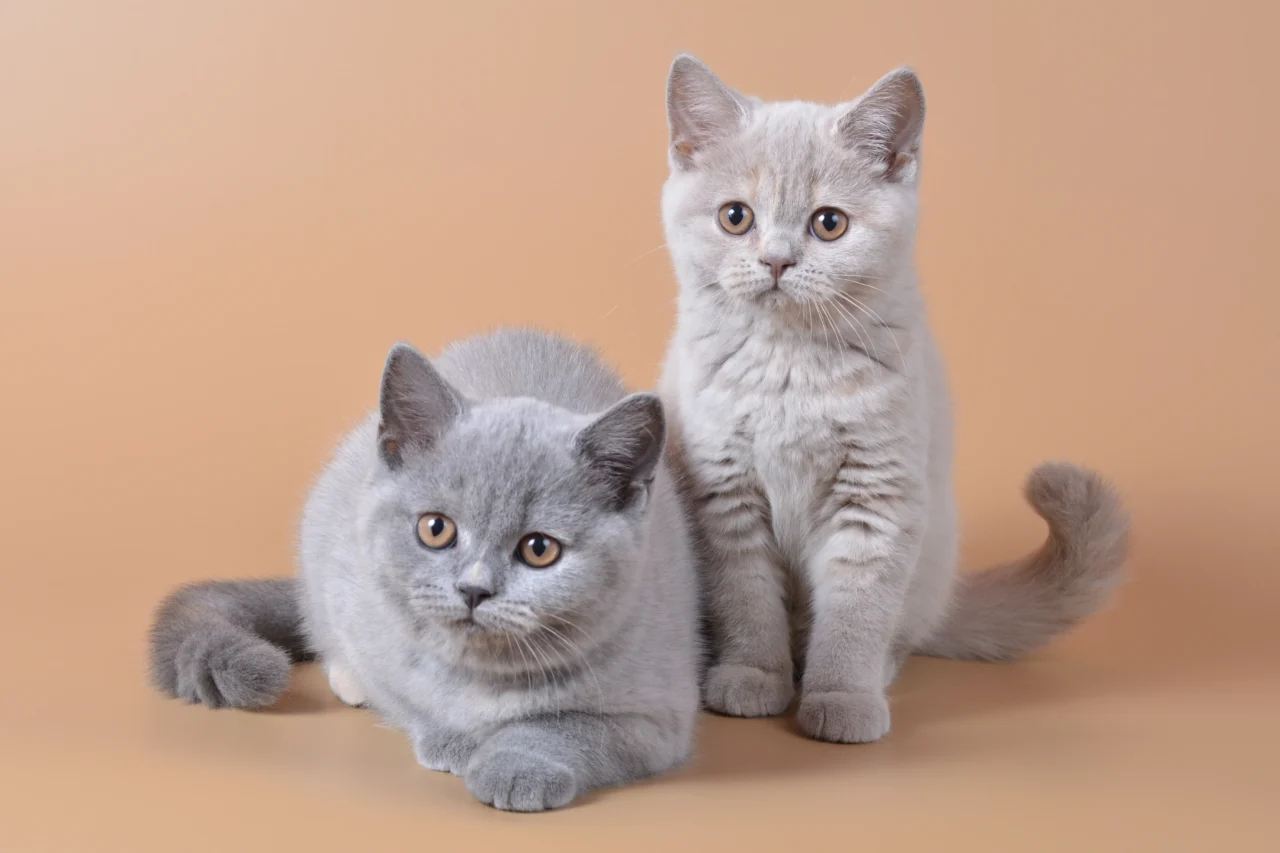
Maybe you know somebody who has a lilac tortoiseshell cat. Maybe you were watching TikToks and you caught a glimpse of the most purrfect paws you’ve ever seen (and you noticed the caption says “lilac tortoiseshell cat”).
Whatever the case might be, there are reasons why you might have been at sea about whether a tortie’s a cat breed.
But, to clarify the confusion, lilac tortoiseshells aren’t a cat breed. As we’ve mentioned a million times throughout the article, lilac tortoiseshell describes the color and the pattern of the fluff a particular cat breed might possess. And, there are a bunch of cat breeds you can choose from when you’re looking for a lilac tortie.
2. And, a bunch of breeds have lilac tortoiseshell cats.
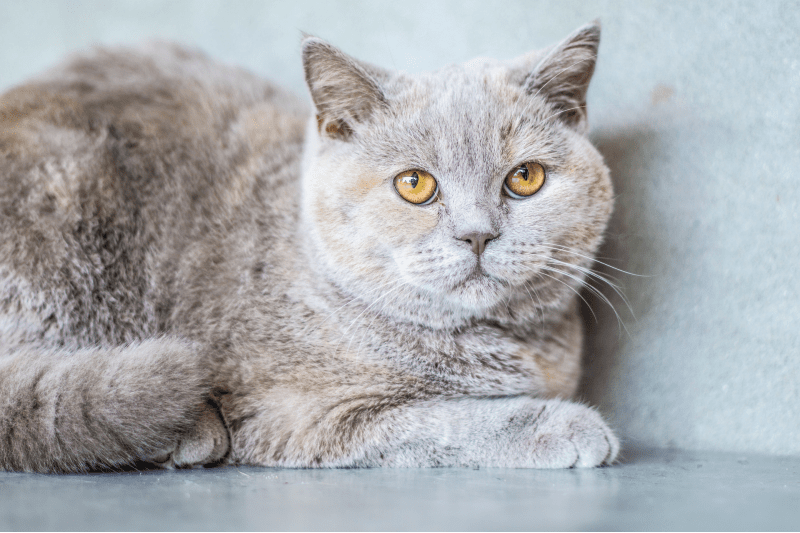
Oh, there’s hardly a coat combination that’s more eye-catching and thought-provoking than a tortoiseshell. And, when you cross one of the most attractive patterns with one of the most mystifying shades, you get the lilac tortoiseshell cat.
But, you never know what you’re getting because lilac torties look different depending on the breed.
Now, a Maine Coon tortie would have the fluffiest of furs with the most sought-after cream, blue, and lilac shades. But, an American Shorthair would have the most gorgeous eyes you’ve ever seen, surrounded by short strokes of rosette patterned fluff.
3. Lilac torties are almost always female (girl power for the win!).
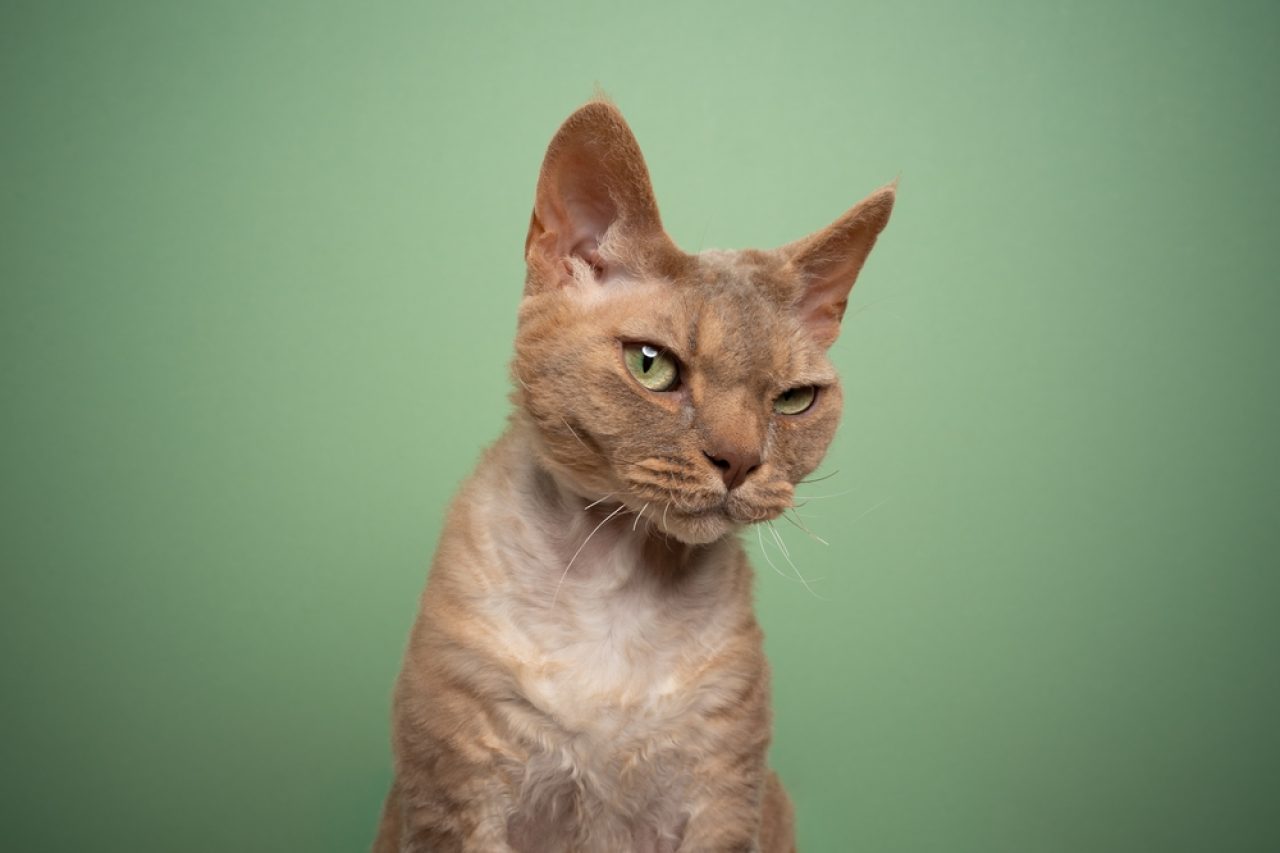
Oh, we’re going back to that seminar we mentioned beforehand! Lilac torties are almost always female because the color of the coat’s always determined by the X chromosome. And, while females have the XX chromosomes, males have the XY chromosomes.
Now, torties have black and red colors of the fluff (and lilac torties have diluted shades). But, the gene that’s responsible for the black color can be found on the X chromosome.
And, the gene that’s responsible for the red color can be found on the second X chromosome. So, a cat would need to have two X chromosomes to have both of these colors.
4. Lilac torties don’t have a distinctive personality.
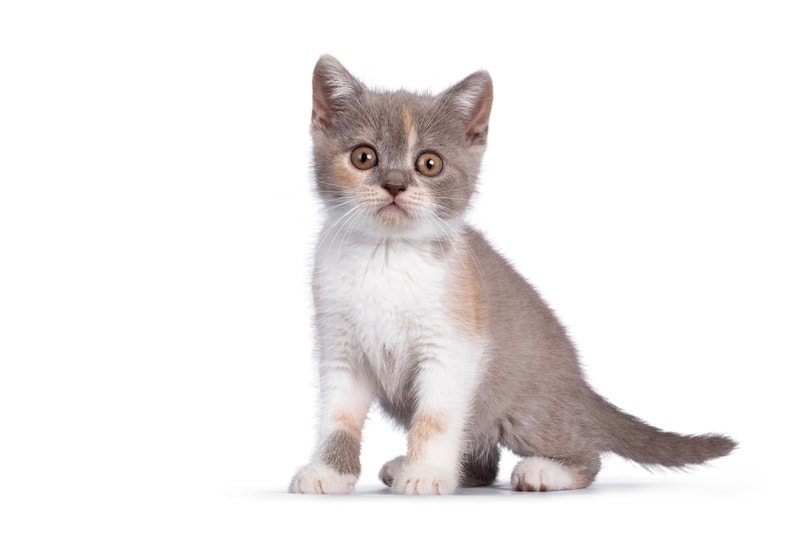
A cat’s temperament doesn’t depend on physical appearance! And, that’s why lilac torties don’t have distinctive purrsonalities you can point fingers at.
“Oh, my tortie tends to act out whenever she’s home alone!” or “But, my tortie’s aggressive whenever we have guests!” might be something you would argue.
But, a cat’s temperament almost always depends on the breed or the environment. Maybe she’s acting out because she hasn’t been properly trained and she doesn’t know what’s wrong and right. Maybe she’s aggressive because she wasn’t properly socialized when she was a kitten. Whatever the case might be, there’s no evidence that a tortie’s pattern affects her behavior.
5. And, tortitude might not be a real thing.
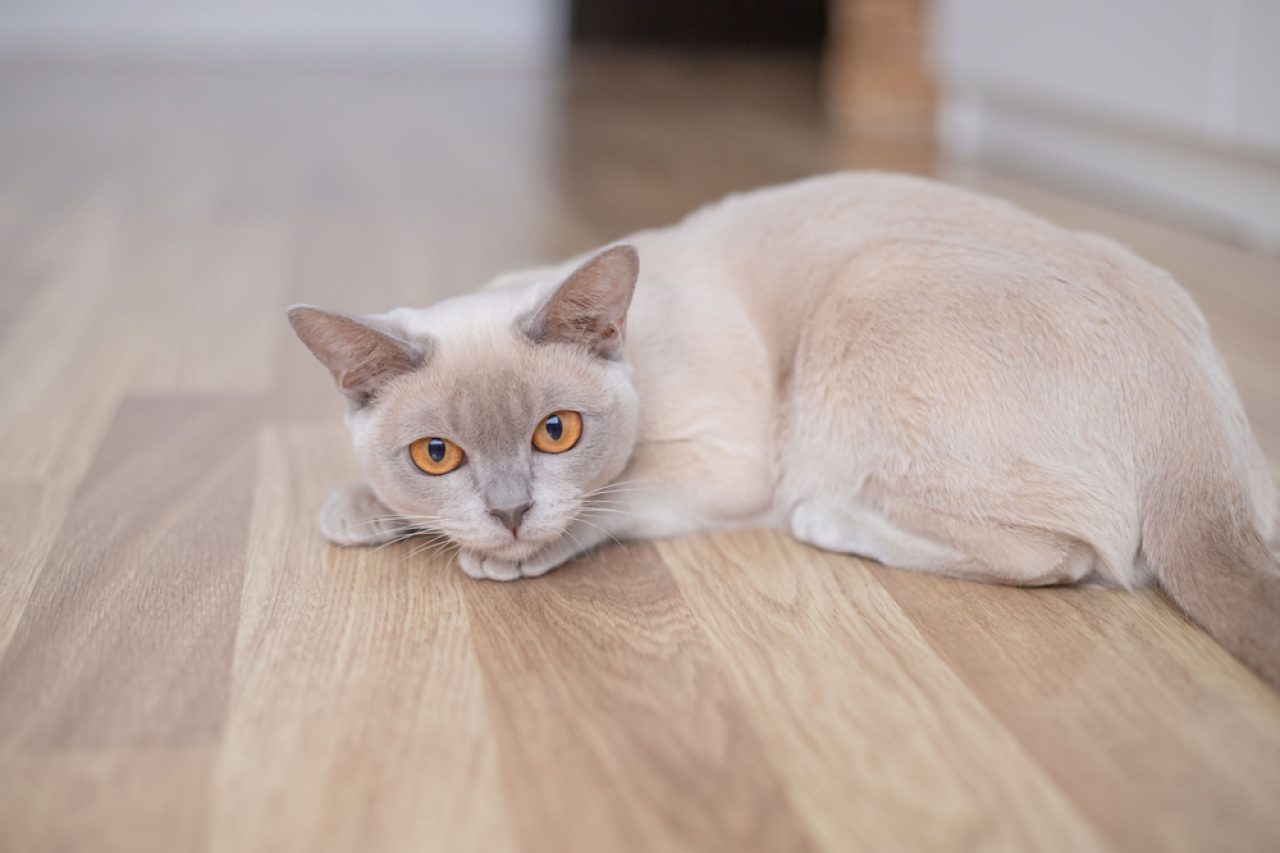
Tortitude seems to be a fun play on words painting a picture of the attitude torties (supposedly) possess. And, there are plenty of pet parents who would swear on everything they have that torties behave a certain way when nobody’s looking – they’re aggressive, stubborn, and possessive.
As a matter of fact, these claims have gone as far as to get professionals interested and intrigued enough to do research. But, they couldn’t find anything that proves there’s a connection between a tortie’s appearance and behavior.
Other than the fact that most lilac torties are females, of course. And, most females are more aggressive than males because of hormones. So, tortitude might be a real thing when you change your perspective.
6. Lilac tortoiseshell cats are rare.
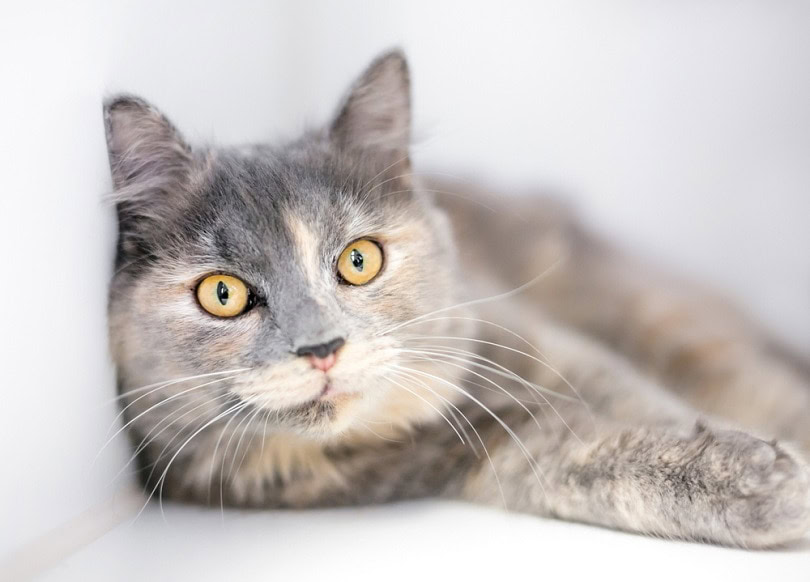
My family and friends have been fostering kittens for a really long time and we’ve stumbled upon torties from time to time. Of course, these little blotchy beasts have been the talk of the town. They’re absolutely adorable and out of the ordinary!
But, we’ve only had the pleasure of fostering torties with black and red fluff because that’s the most common combination. And, never have we ever had the opportunity to even observe a lilac tortoiseshell which speaks for the whole “the rarest out of the bunch” thing we have going on.
So, when you’re planning on getting your hands on one of these mythical creatures, you might want to hold your horses – or at least prepare to be patient.
7. But, they aren’t rare among folklore stories, myths, and legends!
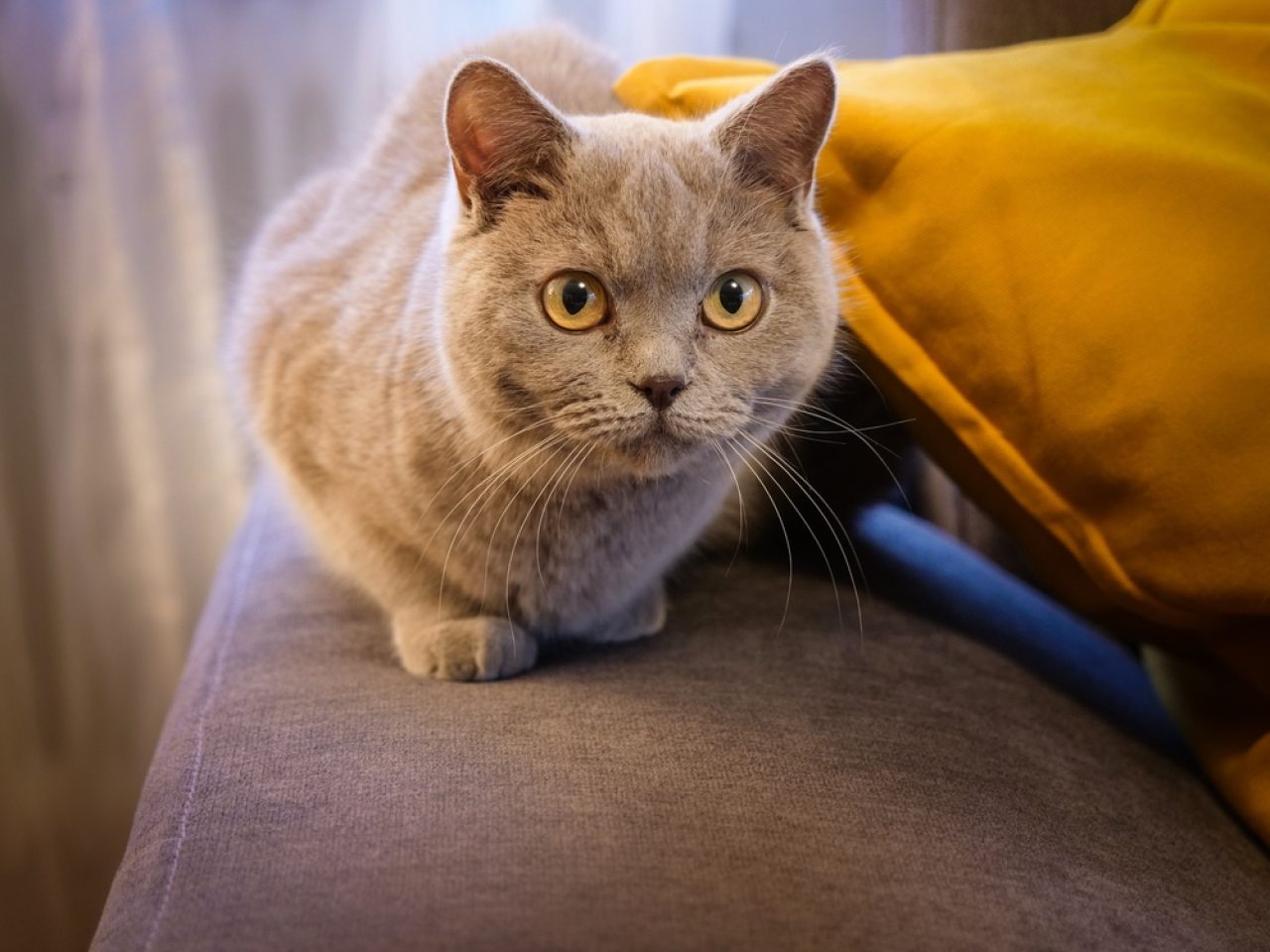
Oh, these bad boys aren’t rare among folklore stories, myths, and legends which proves my point (from the beginning of the article). Come on; you can’t have a purple cat and claim she’s not a mythical creature. So, what are these stories that can’t get enough of the tortie’s charms?
Firstly, a bunch of humans think that torties symbolize good fortune. Irish and Scottish cultures used to keep torties around the house because they were thought to bring prosperity to the family. Oh, and the Americans used to refer to them as “money cats” for that same reason.
On the other hand, the English believed that rubbing a tortie’s tail on warts, growths, and swellings would help heal them. And, we can’t forget about the Japanese who believed bringing a tortie on the boat with them would protect them from bad weather.
8. Lilac tortoiseshell cats have a diluted coat color that combines lavender, gray, and cream.
Lilac tortoiseshell cats boast a stunning coat that blends lavender, gray, and cream hues. This unique coloration is the result of a dilution gene that lightens the typical tortoiseshell palette. The colors merge seamlessly, creating a soothing visual that is both understated and elegant.
Often, their coats have a soft, almost watercolor effect that captivates onlookers. This distinctive appearance sets them apart from other cats and adds an element of mystery and allure.
The beauty of their coat is not just in its colors but in the fluid transition and harmony within each pattern.
9. Their eye color can range from green to yellow and even copper.
The eyes of lilac tortoiseshell cats are as mesmerizing as their coats. They can possess a range of eye colors, including green, yellow, and copper. This variety adds depth and character to their already enchanting appearance.
Their eyes often have a striking clarity and brilliance that reflect light beautifully. Whether gazing intently or simply relaxing, these cats communicate a world of emotion through their eyes.
It’s this expressive quality that makes them so engaging and unforgettable to those who have the pleasure of meeting them.
10. The lilac tortoiseshell pattern is caused by a genetic mutation that lightens the typical tortoiseshell colors.
The lilac tortoiseshell pattern emerges from a fascinating genetic mutation. This mutation involves a dilution gene that alters the standard tortoiseshell colors, lightening them to softer shades.
The gene affects the pigmentation process, leading to the unique combination of lavender, gray, and cream. This phenomenon is a testament to the wonders of genetics and the diversity it brings to the feline world.
Understanding this mutation provides insight into the origins of their remarkable appearance and the complexity of cat genetics.
11. Lilac tortoiseshell cats tend to be affectionate and enjoy human companionship.
Lilac tortoiseshell cats are known for their affectionate nature and love of human interaction. They tend to form close bonds with their owners, often following them around the house and seeking attention.
This companionship is not just physical; they seem to genuinely enjoy being part of family activities. Their gentle purring and soft nudges communicate a need for closeness and affection.
These cats are often considered excellent companions for those who appreciate a cat that is both loving and interactive.
12. They are playful and active, often engaging in interactive games.
Playfulness is a hallmark of lilac tortoiseshell cats. They’re naturally curious and enjoy engaging in interactive games that challenge their agility and intelligence. These activities are not only fun for the cat but also provide great entertainment for their owners.
From chasing feather toys to solving puzzle feeders, they thrive on mental and physical stimulation. Their lively spirit and enthusiasm for play make them a joy to have in the home.
Regular play sessions help them remain healthy and happy, strengthening the bond with their owners.
13. Lilac tortoiseshell cats are loyal and form strong bonds with their owners.
Loyalty is a defining trait of lilac tortoiseshell cats. They form deep, enduring bonds with their human companions, often choosing one person as their favorite.
This loyalty is expressed through their constant companionship and a desire to be near their chosen person. Such bonds are built over time and are strengthened by mutual trust and affection.
Owners often find comfort in the unwavering presence of their cats, who seem to understand their emotions and provide support through their quiet companionship. This loyalty enriches the relationship between the cat and the owner.
14. They are generally good with children and other pets in the household.
Lilac tortoiseshell cats are typically friendly and adaptable, making them well-suited for households with children and other pets. They possess a gentle demeanor that allows them to interact harmoniously with young family members and other animals.
Their patience and tolerance make them ideal companions in a bustling home environment. This adaptability is a significant advantage for families seeking a pet that can fit seamlessly into their daily lives.
These cats can often be found playing with children or resting peacefully alongside other pets, contributing to a harmonious household.
15. Lilac tortoiseshell cats typically have a short, low-maintenance coat.
The coats of lilac tortoiseshell cats are not only beautiful but also practical. They typically have short, low-maintenance fur that requires minimal grooming.
This feature is a boon for busy owners who still want a pet with striking looks. Regular brushing helps maintain their coat’s shine and softness but is not a time-consuming task.
The ease of care extends to their general health and hygiene, making them an excellent choice for those seeking a pet with minimal upkeep. This practicality does not detract from their beauty; rather, it enhances their appeal.
